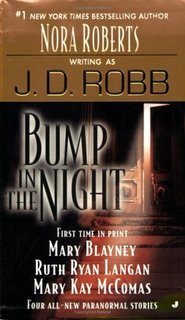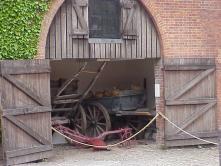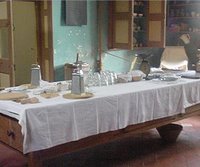I’m composing this by the sea (but posting later), a beautiful sea view out my hotel window at Daytona Beach, Florida where I am attending the Romantic Times Booklover’s Convention. It is a beautiful sunny day with blue skies reflecting in the water, gentle waves breaking into foamy white. The sand is hard packed, perfect for walking or sun-bathing. I love the ocean. I love the smell of it, the rhythmic sound of the waves, the soothing sight of the water, the warmth of sun on my skin.
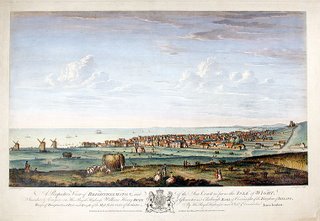 In my imagination I’ve spent a great deal of time at another beach resort – Brighton in Sussex. The book I’m working on now, untitled as yet, takes place at Brighton, the seaside town the Prince of Wales, aka “Prinny” made fashionable and where he built his exotic Pavilion. In my book I am in Brighton of 1816 and it is cold.
In my imagination I’ve spent a great deal of time at another beach resort – Brighton in Sussex. The book I’m working on now, untitled as yet, takes place at Brighton, the seaside town the Prince of Wales, aka “Prinny” made fashionable and where he built his exotic Pavilion. In my book I am in Brighton of 1816 and it is cold.
1816 was “the year without a summer” with June snowstorms in the Colonies and rain and chill in the British Isles and Europe. It is thought that the year without a summer was caused by the April 1815 volcanic eruptions of Mount Tambora half a world away on the island of Sumbawa in Indonesia. Mary Shelly wrote Frankenstein that “wet, ungenial summer” of 1816, because she, Percy Byssh Shelly and Lord Byron were housebound and bored in Lake Geneva.
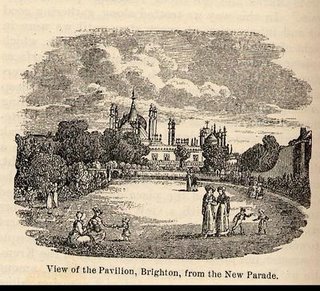
In 1816 the exotic renovations to the Prince Regent’s Marine Pavilion had not yet been completed, and the Prince Regent was not in attendance (that I could discover), but just as so many of us do today, the fashionable people came to the sea side for summer entertainment. Without sea bathing, my characters have had to pass the time at the Circulating Library, which was less like what we would think of as a library, and more like a Barnes & Noble or Borders, where one could purchase refreshment and gather for conversation. One could also gaze at the newest caricatures that arrived from London or try out the newest sheets of music on the pianoforte. The fashionable people also attended balls, assemblies and card parties at the Old Ship Hotel or the Castle Inn, and a dreadfully boring-sounding Sunday afternoon Promenade.
Unlike the view of people out my window here at Daytona Beach, there is no sea bathing in my book, which tells Blake’s story. Theobald Blackwell, Viscount Blakewell, is one of the Ternion introduced in The Marriage Bargain, the three men who have been friends since childhood. Blake reunites with the daughter of a con artist and sparks fly–passionate ones!
In the real world, I have been meeting with friends–fellow authors, booksellers, and readers–at the Romantic Times Convention. The Marriage Bargain, nominated for the Reviewer’s Choice Award for Best Regency-set Historical, alas, did not win, but I was interviewed about it for Dungeon Majesty, a website doing a documentary on Romance. I looked it up and it seems to also be a very clever Dungeons and Dragons site. Imagine me on a Dungeons and Dragons website!
Cheers!
Diane


